Every art teacher knows that being absent can be stressful, especially if you don’t have a solid plan in place. That’s where art sub plans come in handy.
A well-prepared sub plan ensures that students stay engaged in meaningful activities, even when you’re not there.
Unlike other subjects, art classes can be tricky for substitutes, especially if they don’t have an art background. That’s why creating simple, clear, and fun lessons that students can do with little guidance is important.
The best sub plans are easy to follow, require minimal prep, and keep students busy without special supplies.
In this blog, I’ll cover how to create effective art sub plans, fun project ideas, and helpful tips to keep your classroom running smoothly.
Understanding Art Sub-Plans
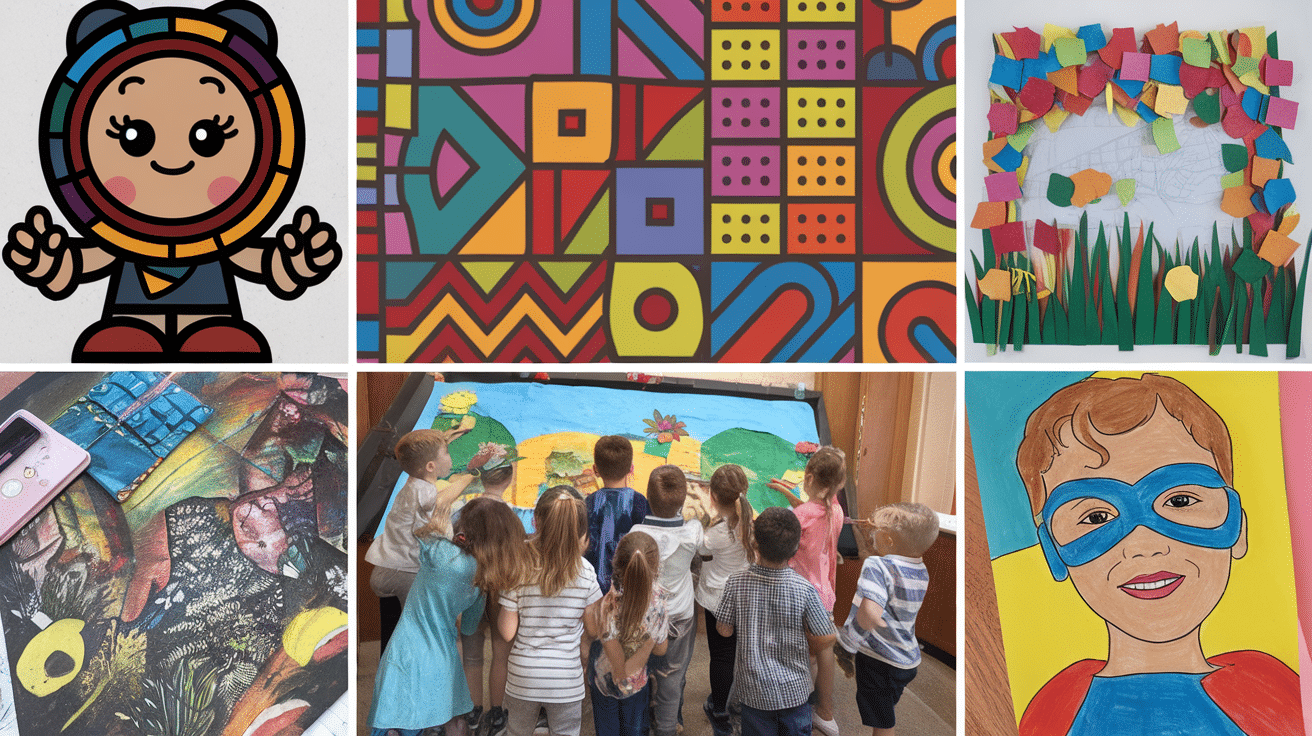
Art sub plans are lesson plans designed for substitutes to use when an art teacher is absent.
Since many substitutes don’t have an art background, these plans must be simple, clear, and easy to follow while keeping students engaged in a creative activity.
Unlike regular lesson plans, art sub-plans should require minimal prep and use basic materials like pencils, markers, or paper. The goal is to provide a fun, meaningful project that students can complete independently or with little guidance.
Good sub plans also help maintain classroom structure. They should include step-by-step instructions, a materials list, and behavior expectations so substitutes feel confident leading the lesson.
Having ready-to-go art sub plans makes taking a sick day or attending meetings easier without worrying about what your students will do. A well-planned activity keeps them learning, creating, and engaged.
Fun and Easy Art Sub Plans for Any Classroom
Having a variety of ready-to-go art sub plans ensures that students stay engaged and creative when you’re away.
Whether you need a no-prep lesson or a low-prep activity, these ideas are perfect for substitutes and students of all ages. Here are different art sub plans to keep your classroom running smoothly.
No-Prep Drawing Activities
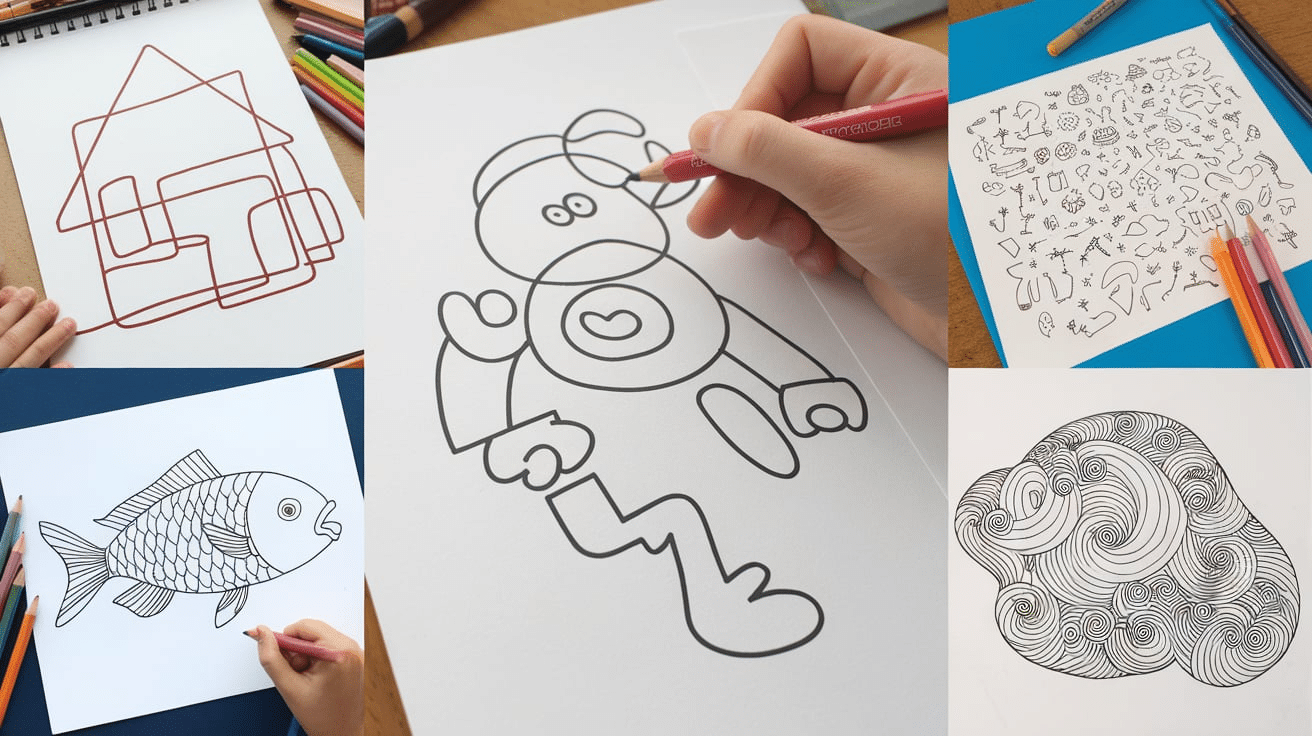
These lessons need no setup or special materials, just paper, and pencils, making them perfect for last-minute absences.
1. Continuous Line Drawing: Students create an entire drawing using one continuous line without lifting their pencil. This is great for creativity and fine motor skills.
2. Doodle Challenge: Give students random squiggles or shapes and have them turn them into something creative, like animals, faces, or objects.
3. Mystery Drawing: Write a list of random objects (like a spaceship, treehouse, or jellyfish), and have students pick one to draw. You can even turn it into a guessing game!
4. Draw Your Name in 3D: Students write their names in block letters and decorate them with shading patterns or a 3D look.
5. Zentangle Art: Students fill a shape (like a handprint or a heart) with detailed patterns and designs to create a calming and creative piece.
Low-Prep Art Projects
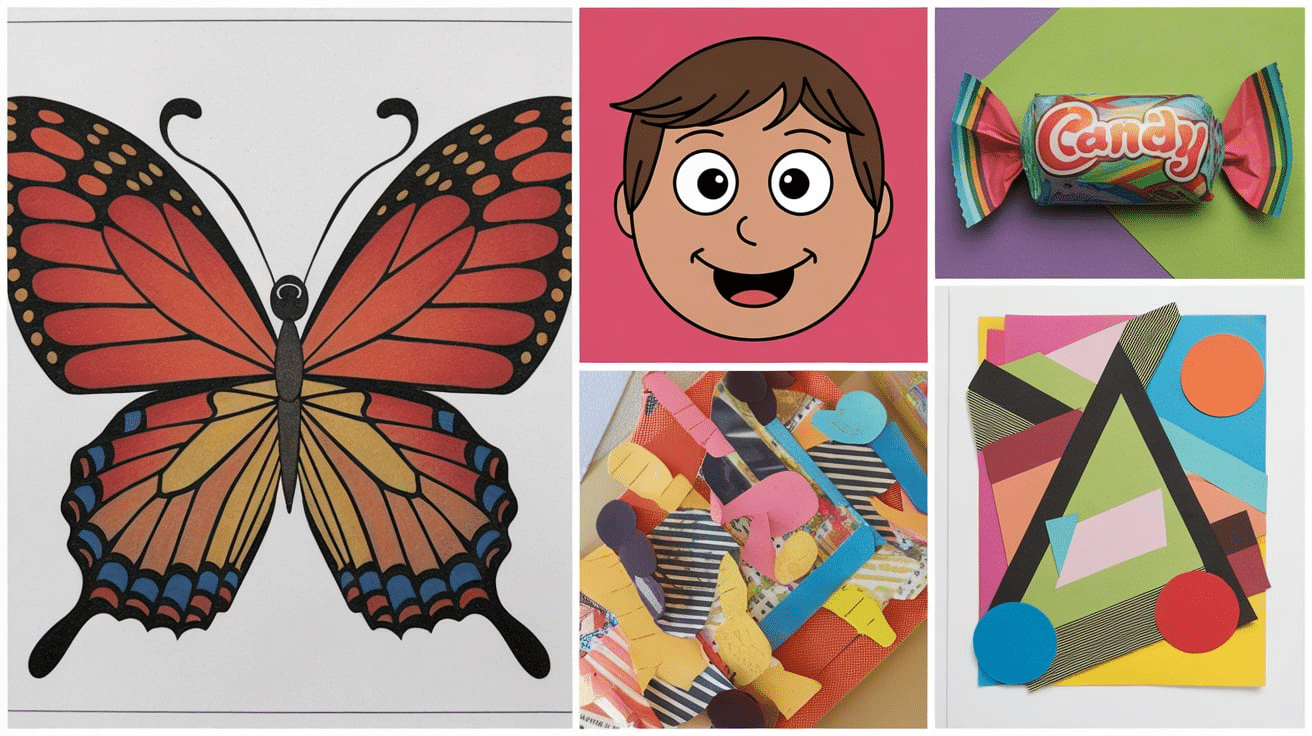
These activities require minimal prep and only use basic classroom supplies like crayons, markers, or scissors.
6. Symmetry Drawing: Students draw half of an object (like a butterfly or face), then fold or mirror the other side to create a perfectly symmetrical design.
7. Cartoon Self-Portrait: Students draw themselves as cartoon characters, superheroes, or their favorite animated style.
8. Create a New Animal: Students combine two animals to create a brand-new species. For example, a “turtigator” (turtle + alligator) or “penguicorn” (penguin + unicorn).
9. Design a Candy Wrapper: Students invent a new type of candy and design a wrapper with bright colors, patterns, and a creative logo.
10. Paper Collage Art: Using scrap paper, magazines, or colored paper, students cut and arrange different pieces to create a fun collage.
Seasonal and Holiday-Themed Lessons
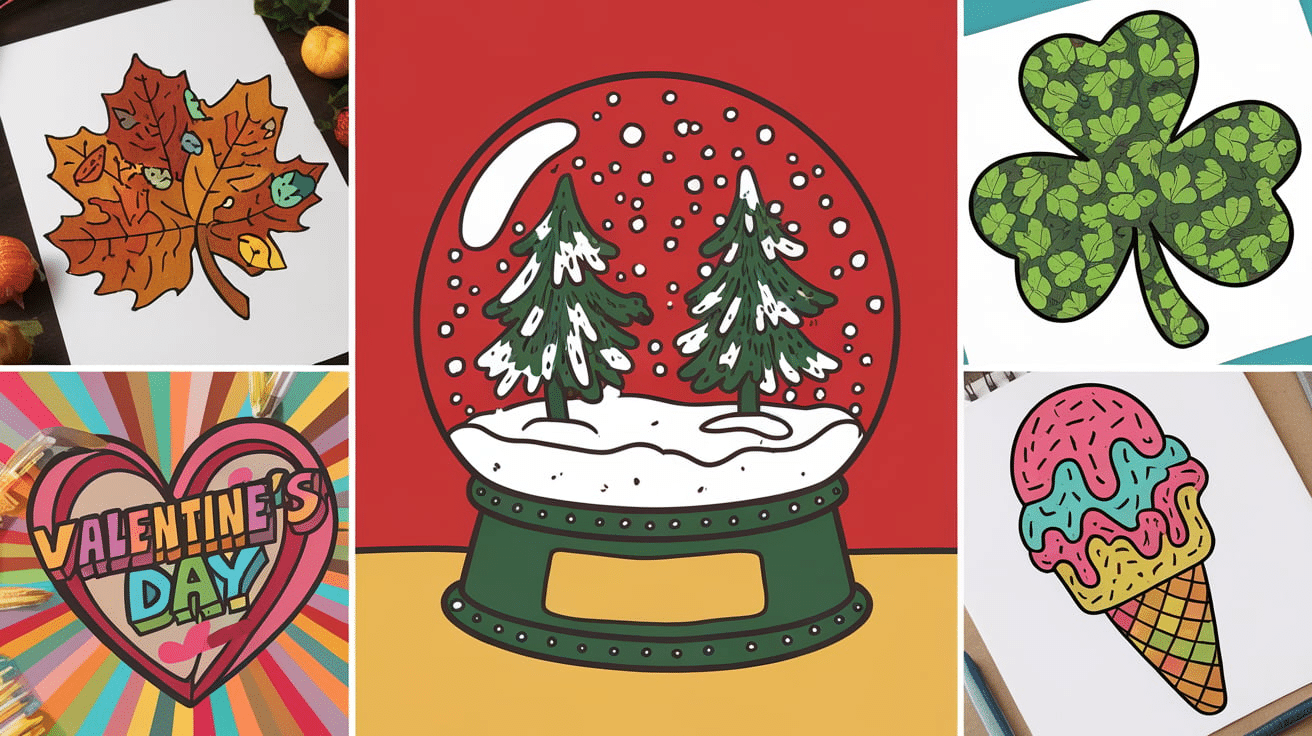
These lessons connect to seasons or holidays, making them extra fun and engaging.
11. Fall Leaf Art: Students draw or cut out fall leaves and fill them with patterns, warm colors, or even tiny doodles.
12. Winter Snow Globe Drawing: Students draw a snow globe with a tiny winter scene inside, like a snowman, house, or holiday village.
13. Valentine’s Day Pop Art: Students create bold, colorful hearts using a Pop Art style with bright colors and thick black outlines.
14. St. Patrick’s Day Patterned Shamrocks: Students fill a shamrock outline with detailed patterns and different shades of green.
15. Summer Ice Cream Design: Students invent a new ice cream flavor, draw it in a cone or cup, and decorate it with creative toppings.
Art History and Famous Artist-Inspired Lessons
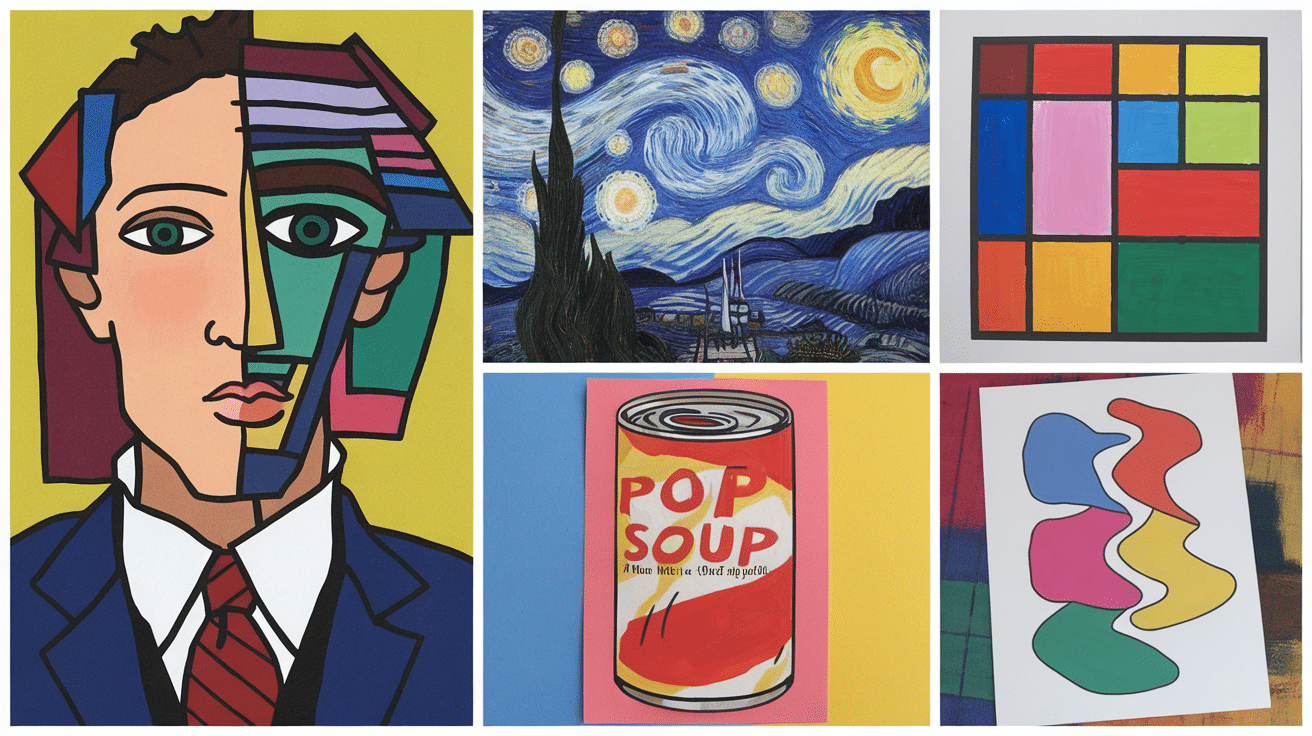
These lessons are inspired by famous artists but simple enough for a sub to teach.
16. Picasso-Inspired Portraits: Students draw a wacky, colorful portrait with mismatched eyes, noses, and shapes in a Cubist style.
17. Van Gogh’s Swirling Skies: Students create a mini version of “Starry Night” by blending blues and yellows with crayons or oil pastels.
18. Mondrian Color Blocks: Students design an abstract artwork using bold black lines and primary colors, just like Piet Mondrian.
19. Andy Warhol-Inspired Pop Art: Students pick a common object (like a soda can, shoe, or fruit) and color it in four different bright color schemes to mimic Warhol’s Pop Art.
20. Matisse-Inspired Paper Cut-Outs: Students use cut paper shapes to create a collage in the style of Henri Matisse, arranging different colors into a fun design.
Quick and Fun Drawing Challenges
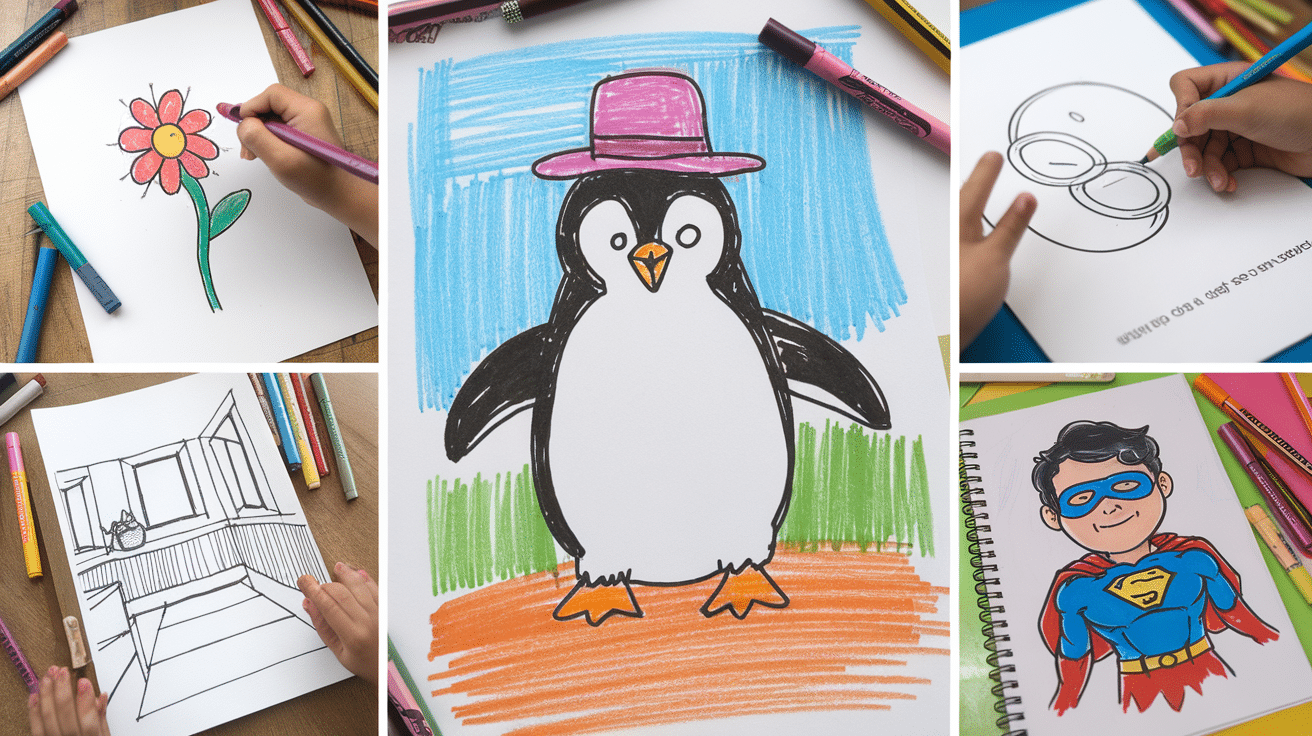
These are perfect for short class periods.
21. Draw Your Dream House: Students design their dream home, including fun features like slides, secret rooms, or a rooftop garden.
22. One-Minute Sketches: Set a timer for one minute and give students random prompts like “Draw a monster,” “Draw a robot,” or “Draw a crazy hat.”
23. Upside-Down Drawing: Students take a simple image (like a cat or a tree) and redraw it upside down, forcing them to focus on shapes instead of the whole object.
24. Roll-a-Doodle Game: Make a dice-rolling game where each roll determines a different part of their drawing, like eyes, nose, or hair (great for drawing monsters or aliens).
25. Object Mash-Up Drawing: Students combine two random objects (e.g., a fish and a chair) into one creative invention.
Abstract and Pattern-Based Art Activities
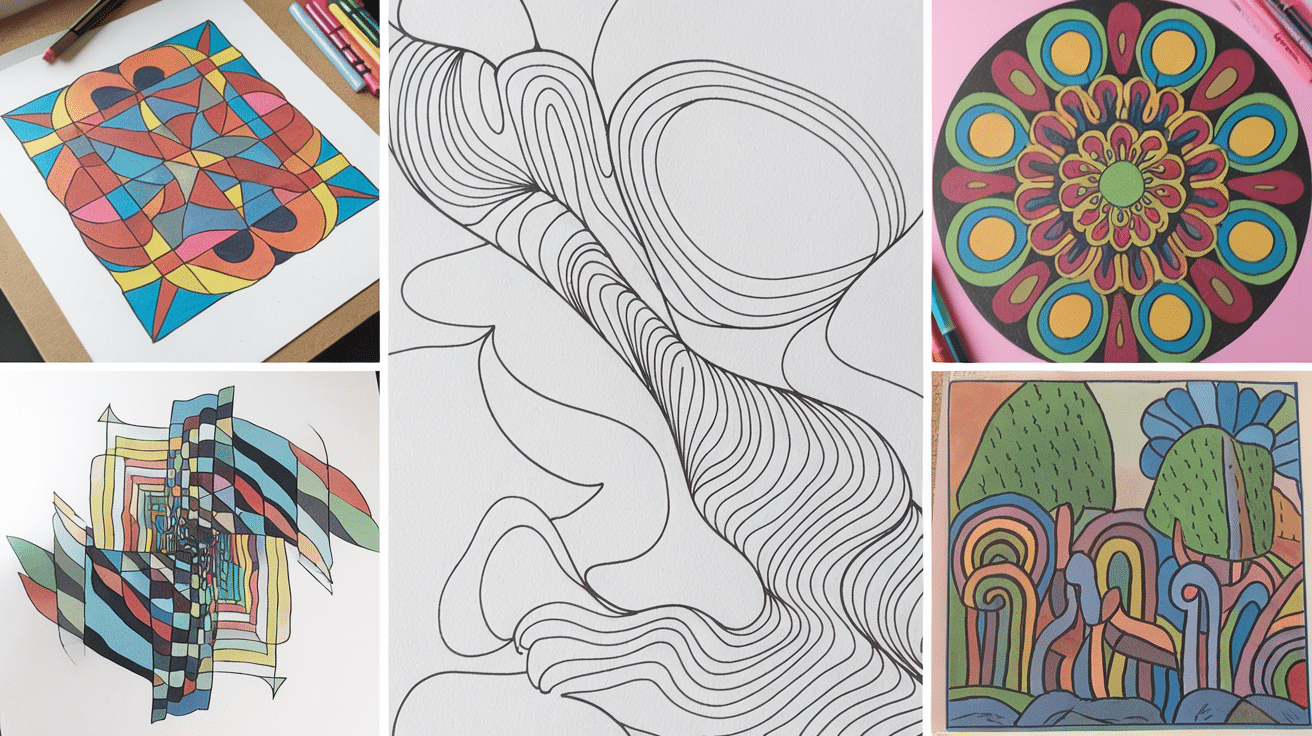
These are very Relaxing and easy to follow, making them ideal.
26. Crazy Hair Portraits: Students draw a face and fill in the hair with wild, colorful patterns or swirling lines.
27. Optical Illusion Art: Teach simple optical illusion techniques, like wavy checkerboards or 3D handprints using curved lines.
28. Mandala Designs: Students create a detailed, circular mandala with repeating patterns and shapes.
29. Patterned Animal Drawings: Students pick an animal and fill it with patterns, dots, and textures instead of solid colors.
30. Geometric Shape Art: Students build a picture using only triangles, circles, and squares, then color them in bold Pop Art colors.
Interactive and Imaginative Art Prompts
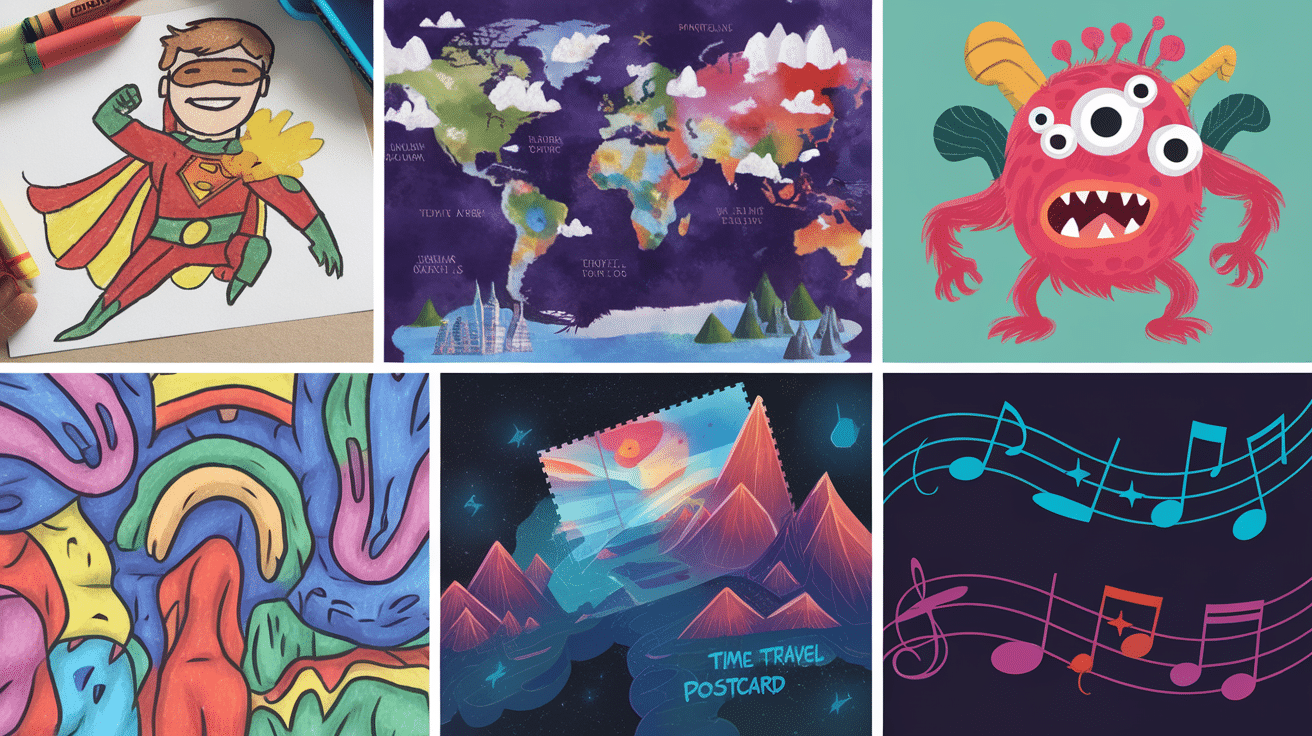
These are great for storytelling and creativity, which can be helpful for kids.
31. Design a New Superhero: Students create their own superheroes, designing their costumes, special powers, and backstory.
32. Create a Fantasy World Map: Students draw a map of a made-up world, including mountains, islands, and hidden treasure spots.
33. Monster or Alien Invention: Have students invent a brand-new monster or alien species, giving it unique features and a story.
34. Time Travel Postcard: Students design a postcard from a different time period (past or future) and illustrate what they “saw” there.
35. Draw What You Hear: Play different types of music and have students draw how the music makes them feel, using lines, shapes, and colors.
Collaborative Art Projects
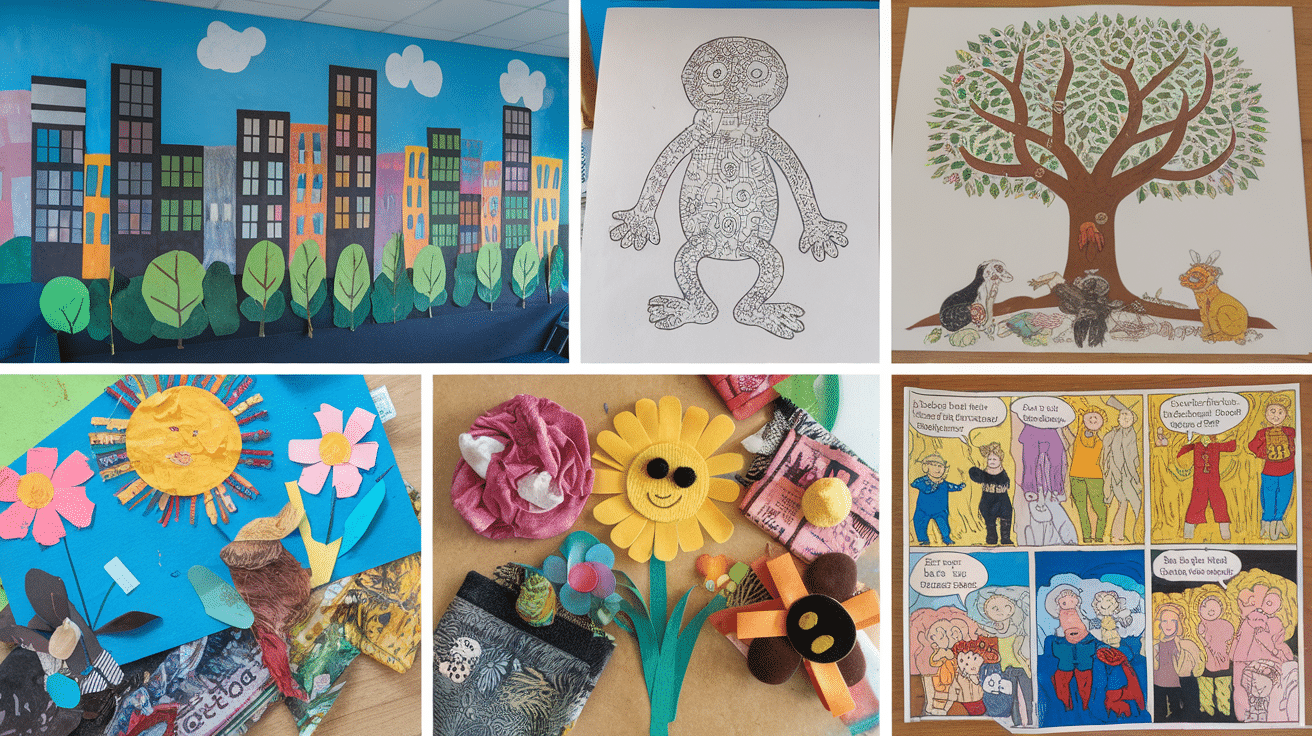
These group projects are worth trying if you want kids to work as a team.
36. Class Mural: Each student draws a small piece of a bigger mural, which can be assembled later into one giant artwork.
37. Corpse Drawing: Each student draws part of a creature (head, torso, legs) without seeing the other parts. At the end, reveal the full drawing for a hilarious surprise!
38. Pass-the-Paper Drawing: Students start a drawing and then pass it to another student to add onto, continuing until the paper is full.
39. Paper Quilt Patterns: Each student designs a small square with patterns that get combined into a classroom “quilt.”
40. Storytelling Comic Collab: Each student draws one panel of a comic strip, and the next student continues the story.
Having a variety of ready-to-go art sub plans makes sure students stay creative and engaged while you’re away. Print out a few of these sub plans, keep them in your classroom, and never stress about last-minute absences again!
What Every Art Sub Plan Should Include
A great art sub plan keeps students engaged and makes it easy for a substitute to manage the class. Here are the most important things to include:
1. Clear and Simple Instructions: Your sub-plan should have step-by-step directions that are easy to follow. Avoid complicated art techniques or projects that require special skills. Keep it straightforward.
2. Materials List: List all the supplies needed for the lesson. Stick to basic materials like paper, pencils, markers, or crayons—things most classrooms already have. This makes it easier for the sub and students.
3. Classroom Expectations: Include behavior guidelines and class routines. Let the sub know what’s expected of students. You can also add how to distribute supplies, clean up, or stay on task during the lesson.
4. Backup Activities: Not all classes work at the same speed. Have a simple backup activity in case students finish early. This could be a quick drawing prompt, a coloring page, or a simple creative challenge.
Including these key components will make your art sub plan easy to use, engaging for students, and stress-free for the substitute.
Tips for Creating Engaging Art Sub Plans
A great art sub plan keeps students engaged, creative, and on-task while making it easy for a substitute to follow. Here are some simple tips to ensure your sub plans are fun, clear, and stress-free.
1. Keep It Simple: Substitutes may not have an art background, so avoid complicated techniques or special materials. Stick to basic supplies like pencils, markers, and paper. The easier the lesson, the smoother the class will go.
2. Provide Step-by-Step Instructions: Make sure your plan includes clear, step-by-step directions. Bullet points or short sentences work best. If possible, include a sample drawing or finished example to help students understand the task.
3. Choose Lessons That Work for All Skill Levels: Not all students are confident in art, so pick lessons that anyone can enjoy. Simple activities like pattern drawing, optical illusions, or cartoon characters help every student feel successful.
4. Use No-Prep or Low-Prep Activities: The best sub plans don’t require a lot of setup. No-prep drawing challenges (like “Draw your dream house” or “Invent a new animal”) work well because they need only a pencil and paper.
5. Have a Backup Plan: Some students may finish early. Include a backup activity, like a fun doodle challenge or a “Finish the Picture” worksheet, to keep them busy while others are still working.
6. Add a Fun Theme: A creative theme makes the lesson more exciting! Try seasonal themes (fall leaves, winter snow globes) or artist-inspired lessons (Picasso faces, Mondrian color blocks).
7. Make Clean-Up Easy: Avoid messy projects like paint or glue unless the sub is comfortable managing them. Stick to dry materials like colored pencils and markers to keep cleanup simple.
A well-planned art sub lesson keeps your class engaged, reduces stress for substitutes, and ensures students keep creating, even when you’re away. With simple, fun, and easy-to-follow plans, you can take a day off knowing your students are in good hands!
Conclusion
Having engaging and easy-to-follow art sub plans is key to keeping your classroom running smoothly when you’re away. A well-prepared lesson ensures that students stay creative and productive while substitutes feel confident leading the activity.
The best sub plans are simple, low-prep, and fun. Whether it’s a quick drawing challenge, a pattern-based design, or an artist-inspired project, choosing lessons that work for all skill levels makes a big difference. Including clear instructions, classroom expectations, and backup activities helps prevent confusion and keeps students on task.
Keep a sub folder with ready-to-go lessons, extra worksheets, and materials lists to make things even easier. This way, you’re always prepared for an unexpected absence.
With the right planning, you can step away from your classroom without worrying. Your students will continue learning and being creative.
Frequently Asked Questions
Why do I need art sub plans?
A ready-to-go sub plan ensures that students stay on task and engaged in meaningful art activities, even when their regular teacher is away.
What if my substitute has no art experience?
Choose lessons that are easy to explain and don’t require special skills. Step-by-step instructions, example images, and simple materials make it easier for any substitute to follow along.
How long should an art sub plan be?
An effective art sub-plan should be clear and concise. A typical plan should take 45 minutes to an hour, but always add extra time for transitions, clean-up, or unexpected delays.
Should I create art sub plans for different age groups?
Yes! Different age groups have different skill levels and needs. Plan age-appropriate activities, ensuring they are fun, challenging but achievable, and appropriate for the students’ abilities.









